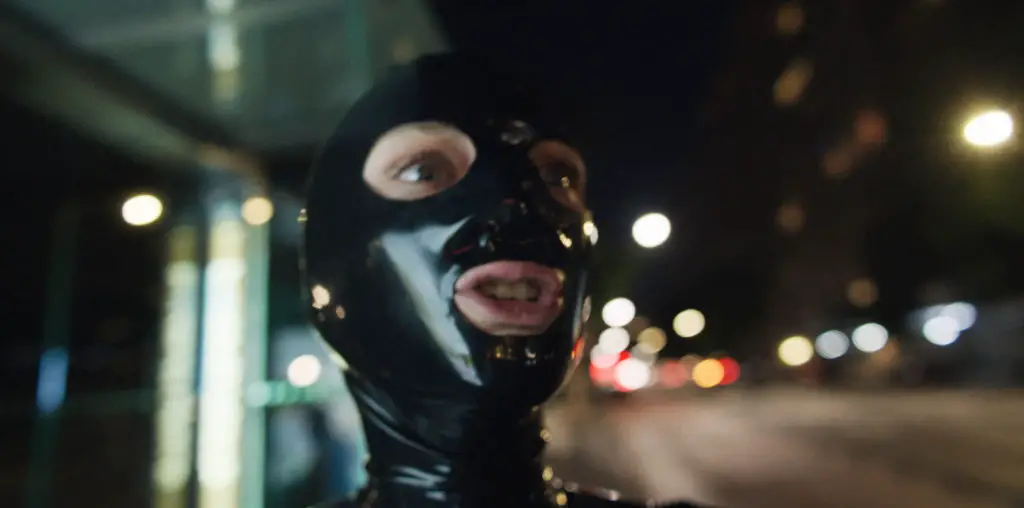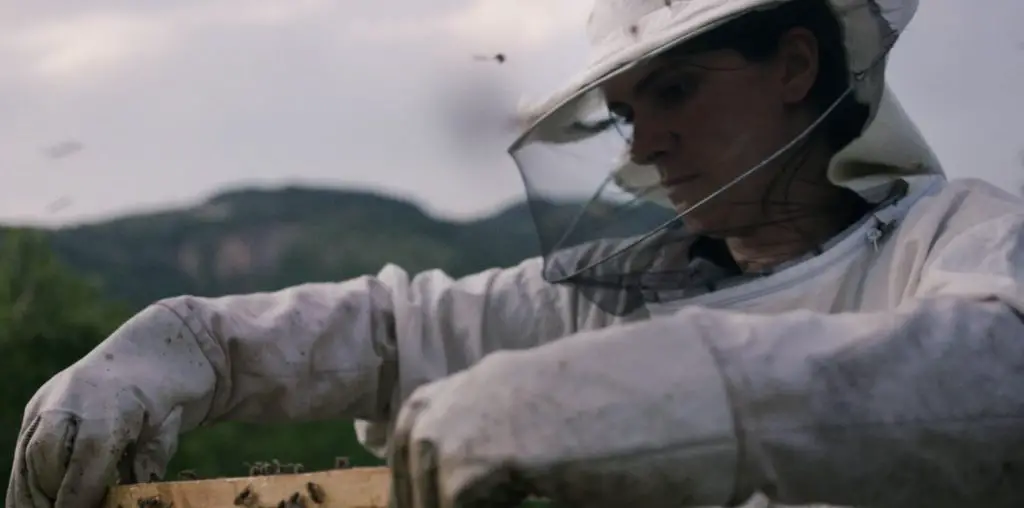
BOOTLEG FILES 555: “Czechoslovakia 1968” (1969 Academy Award-winning documentary short).
LAST SEEN: The film is on YouTube.
AMERICAN HOME VIDEO: None.
REASON FOR BOOTLEG STATUS: An acclaimed film that was barely seen in the U.S., despite being commissioned by the federal government.
CHANCES OF SEEING A COMMERCIAL DVD RELEASE: Who knows?
During the height of the Cold War, the U.S. government engaged in an international propaganda campaign to win the hearts and minds of distant people that viewed Uncle Sam with more than a little skepticism. One of the more effective strategies involved the production of nonfiction films by an entity called the United States Information Agency (USIA). Few Americans were aware of the USIA’s films because of the Smith-Mundt Act of 1948, which prohibited the domestic distribution of propaganda intended for foreign audiences. Thus, American law prevented American taxpayers from viewing the American-produced films that they financed.
In 1969, the chieftains at the USIA decided it would be a propaganda coup to create a film marking the first anniversary of the Soviet Union’s brutal military invasion of Czechoslovakia. The Kremlin boys were not pleased that the Czechoslovakian Communist regime under Alexander Dubcek began a campaign of political and social liberalization called the Prague Spring. Thus, the Red Army and the military forces from the Warsaw Pact nations intervened in Czechoslovakia, resulting in the swift return to hardline Communist rule that lasted until the end of the Cold War.
To help with this production, the USIA received two hours of fine-grain 35mm black-and-white film that was shot by Czechoslovakians that witnessed the military invasion of Prague. The footage was secretly processed in Prague and spirited into the city’s foreign embassies, which smuggled the reels out of Czechoslovakia in diplomatic pouches.
The USIA hired the filmmaking team of Denis Sanders and Robert Fresco to edit the Czechoslovakian footage down into a documentary short. Sanders and Fresco opted to expand their project as a statement on Czechoslovakia’s tumultuous history, from its rise out of the World War I ashes to its horrific dismemberment and occupation under the Nazis to its years of struggle under Soviet-backed Communist rule and into the brief flowering of Prague Spring that was killed in the 1968 invasion.
But there was a problem with this approach: there was very little film footage in the U.S. of Czechoslovakia during the years before the Nazi occupation and in the years between the end of World War II and Prague Spring. The filmmakers were able to locate a source of still photographs of these years, but it turned out to be Sovfoto, the Soviet government’s photo agency. Sanders and Fresco contacted Sovfoto and stated they needed Czechoslovakian-related photographs to help illustrate what they vaguely described as an “educational film.” Incredibly, the naïve Sovfoto staff bought their half-truth and happily provided the photographs.
The resulting film. “Czechoslovakia 1968,” eschews dialogue in favor of offering visuals to tell the story of this European nation’s history. In order to propel the story via still photography, the filmmakers used a photo projector sporting a slide carousel stacked with vintage Czechoslovakian photographs. Each slide slot had a date that corresponded with one year in Czechoslovakian history.
The initial photos showed pastoral scenes of Czechoslovakia’s farmland and glimpses of urban views (whether these city glimpses show Prague or another city is not clear to the non-Czechoslovakian audience). After a couple of minutes, film footage is integrated into the photo display. At first, it all looks peaceful and charming. Then, without warning, a cannon is seen slowly rising into the air. More tranquil shots are thrown in, only to be disrupted with German tanks on the roll and then Hitler marching proudly through the streets of Prague.
Photos and film footage from World War II focus almost entirely on Jewish Holocaust victims. (I might be mistaken, but I believe there is a very brief film fragment that came from the Warsaw Ghetto rather than from occupied Prague.) A shot of the Nazi flag being burned to ashes is followed by footage of the Soviet flag atop a Red Army tank – and that image is subject to a chilling freeze frame.
Life in post-World War II Czechoslovakia is depicted by shots of farmers, coal miners and students going about their business. Soviet symbols of the red star, the hammer and sickle, and a surplus amount of photos of Stalin are seen. There is even a photo of Stalin next to a photo of Jesus. An army parade offers evidence of an iron military presence.
By the time the slide projector gets to 1965, things start to look a bit different. There are young, stylishly dressed people on the screen, and the soundtrack replaces the serious instrumental music with bubbly Czechoslovakian pop music. People seem to be enjoying themselves, and a smiling Alexander Dubcek turns up. The Prague population go shopping, young lovers ride on motor scooters, and everyone seems to be happy whenever Dubcek is around.
That is, everyone except Soviet leader Leonid Brezhnev. But once the picture freezes and the music slurs to a stop, that is a pause for the inevitable invasion.
The remainder of “Czechoslovakia 1968” consists of the most dramatic and astonishing sequences of the footage smuggled out of the country. The local people initially try to be cordial to the invading forces, but sounds of gunfire are followed by massive rallies that run into riots. Sirens blare on the soundtrack as footage of people being carried on stretchers and bloody rivulets in the streets show the harsher aspect of the invasion. A Soviet soldier uses his palm to obscure the camera’s lens, and footage of a funeral ends with the Czechoslovakian flag draped across the coffin.
The initial reaction among the USIA bigwigs to this film was one of great apprehension – some thought the production was too disturbing. But USIA Director Frank J. Shakespeare threatened to resign if the film would be prevented from being distributed to the agency’s overseas outlets.
“Czechoslovakia 1968” had another playdate: a motion picture trade industry screening that resulted in the film being nominated for the Academy Award as Best Documentary Short. Although no one in the U.S. outside of the USIA offices and the Hollywood trade screening saw the film, “Czechoslovakia 1968” won the Oscar in its category.
In 1972, New York Senator James Buckley attempted to secure a broadcast of the film on public television. But this ran afoul of Senate Foreign Relations Chairman J. William Fulbright, who claimed that such a broadcast violated the Smith-Mundt Act. Fulbright complained to the Nixon Administration, which ignored his bellyaching. The Smith-Mundt Act would later be changed to give Americans the right to see USIA films. In 2007, “Czechoslovakia 1968” made news again when it was added to the Library of Congress’ National Film Registry.
If you made it this far into this article, you may have noticed that I haven’t offered any commentary regarding my opinion of “Czechoslovakia 1968.” This is because I really don’t have much to say. Trying to encapsulate a nation’s odyssey into 15 minutes is a thankless task, and a great deal of the photographs and footage used in the film give a somewhat dreary impression of Czechoslovakia. The film only gains momentum in the period leading up to Prague Spring and in the engrossing footage shot in Prague of the invasion. But that’s only on screen for a few minutes – whatever happened to the rest of the two hours’ worth of film that was smuggled out of Prague? I genuinely wish that “Czechoslovakia 1968” was a feature film with a proper narration. In my view, it barely scratches the surface of the Czechoslovakian experience and only offers a fleeting summary of the invasion’s horrors.
The USIA was shut down in 1999. To date, “Czechoslovakia 1968” has never been made available for commercial home entertainment release. A none-too-pristine posting of the film can be seen on YouTube, which may satisfy those with an interest in Czechoslovakian history and Oscar- and National Film Registry-related trivia. But for anyone else, there’s not much here to get excited about.
IMPORTANT NOTICE: While this weekly column acknowledges the presence of rare film and television productions through the so-called collector-to-collector market, this should not be seen as encouraging or condoning the unauthorized duplication and distribution of copyright-protected material, either through DVDs or Blu-ray discs or through postings on Internet video sites.

